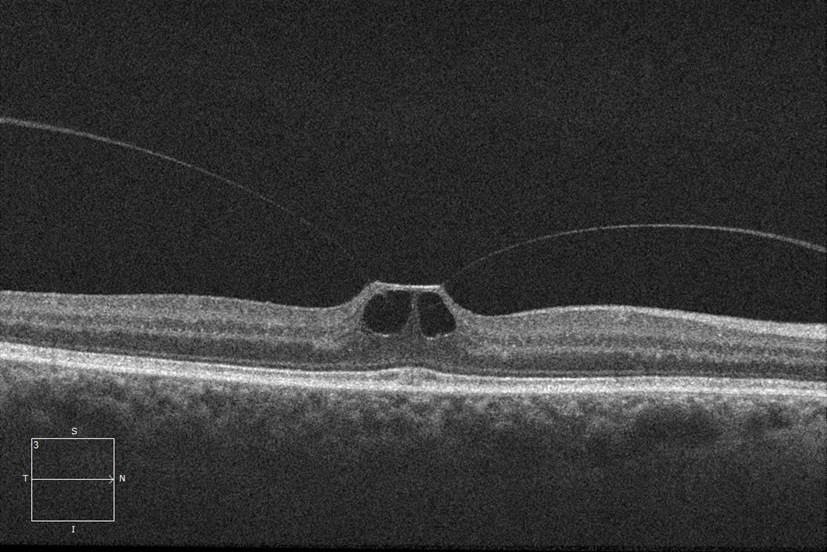What Causes Vitreomacular Traction Syndrome?

The human eye is a very sensitive organ that reacts to light in many circumstances.
It has six muscles that control the movement like contraction and relaxation of the pupil and also provide different angular forces and torques.
It is a gateway to our five senses, and a healthy can see up to 10 million different colours. It is part of our sensory nervous system. The eye works like a camera. The pupil provides the focus; iris provides the aperture stop, cornea of eye resembles a camera lens.
The eye is the most essential organ of the human body as it serves one of the major functions of vision. It won’t be possible for us to carry our daily routines if we face any trouble with the eye.
A small irritation can get under our nerves and keep us uncomfortable throughout the day. You might have heard about different pathological conditions, which are usually common such as glaucoma, myopia, hypermetropia, and cataract formation.
Vitreomacular traction syndrome (VMT) is a form of eye disease. In order to understand what part it affects, we need to know about macula.
The middle of the eye is filled with a clear gel-like called the vitreous humor. This liquid is found in between your eye lens and retina; this gel is encapsulated in the vitreous cortex. This encapsulated cortex is found tightly intact with the help of millions of microfibres in young and healthy adults. The macula is the middle layer between lens and retina
VMT is usually experienced by people in their old age as the eye starts aging this gel-like liquid leaves the retina and is found detached. This detachment is known as posterior vitreous detachment (PVD). This detachment is a part of the normal aging process.
In some people, there is a partial detachment of the vitreous cortex, which results in traction (pull) and can cause anatomical disturbances in the eye. This traction as a result of PVD is termed as Vitreomacular syndrome. Aging weakens the muscular activity, and eye muscles tend to tire more quickly. People with old age are more prone to eye diseases.
The occurrence of VMT is rare, i.e., 1 out 4400 people may get this syndrome. This syndrome can also lead to further maculopathies such as distorted vision, macular holes, and macular edema.
Often VMT is confused with vitreoretinal diseases. You might think, “what is the vitreoretinal disease.” Vitreoretinal disease encompasses a group of disease that affects the eye, retina, and posterior parts of the eye.
This may include diseases like macular degeneration, retinal tear or detachment, macular hole. A person facing vitreoretinal diseases might complain about severe eye pain, night blindness, dimming of central or peripheral vision, distortion of printed words while reading, and sudden eyesight loss.
If we talk about the causes of Vitreomacular traction syndrome, it can be caused by aging.
- Age-related retinal degeneration can lead to the formation of small pockets of fluid within vitreous, which in return, will cause contraction and loss of volume.
- Liquification of gel is another reason which causes detachment. The gel-like structure helps to keep the vitreous humor intact in the cortex.
- Constant traction forces on macula both at the front and back may also lead to detachment of the Vitreous humor as the muscles are already aging, and traction force tend them to exert more force, which will result in partial or complete detachment of cortex.
- The weakening of the vitreous cortex and internal limiting membrane of the eye can also lead to posterior vitreous detachment and VMT syndrome.
- People with diabetic retinopathy can also develop this syndrome.
- High myopia (extreme nearsightedness) can also cause traction and VMT
- If there is an occlusion in the retina, it can also play a part in the detachment of Vitreous cortex thus leading to VMT
- Age-related macular degeneration is also a reason for partial detachment of vitreous humor. 25% People > 80 years of age or above 80years are found with a partial detachment in this regard.
- Shrinkage of Vitreous gel and adhesion between the retina
- Formation of fibroblasts in the microfibers.
- Macular edema can also cause PVD leading to VMT. This edema can be caused by constant liquefication and adhesion to the macula.
The final verdict
It can be diagnosed with optical coherence tomography, which is a non-invasive method of diagnosing VMT.
Vitreomacular traction syndrome is treatable, and one of the most common ways of treat it is peeling off the detached vitreous cortex through surgery.
People with VMT are usually found to have good visual acuity even if treatment is required. However, it is suggested that if you feel frequent distortion in your vision while reading, sudden eyesight loss more than once, floater visual formation such as spot formation, seeing objects smaller than usual then you need to consult your doctor as soon as possible for possible diagnosis and treatment of VMT.
Author Bio:

About Ashley Rosa: Ashley Rosa is a freelance writer and blogger. As writing is her passion that why she loves to write articles related to the latest trends in technology and sometimes on health-tech as well. She is crazy about chocolates. You can find her at twitter: @ashrosa2.
Comments are closed.